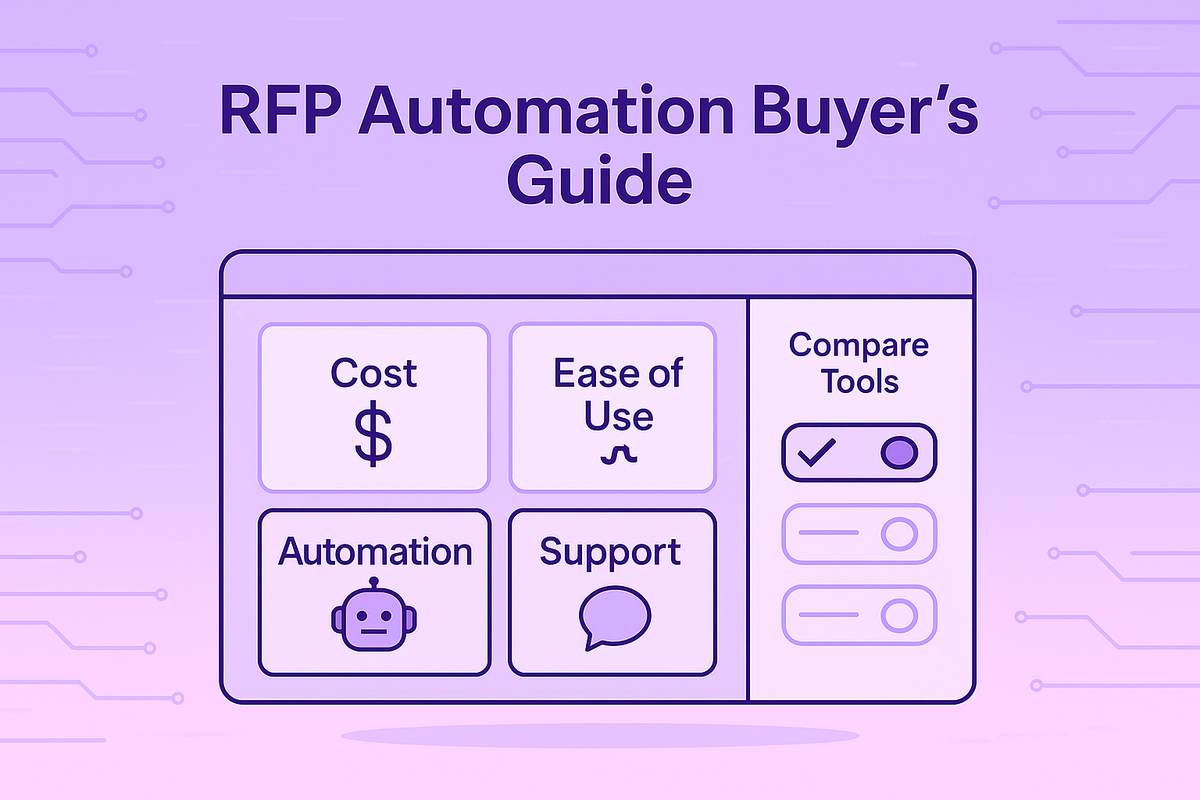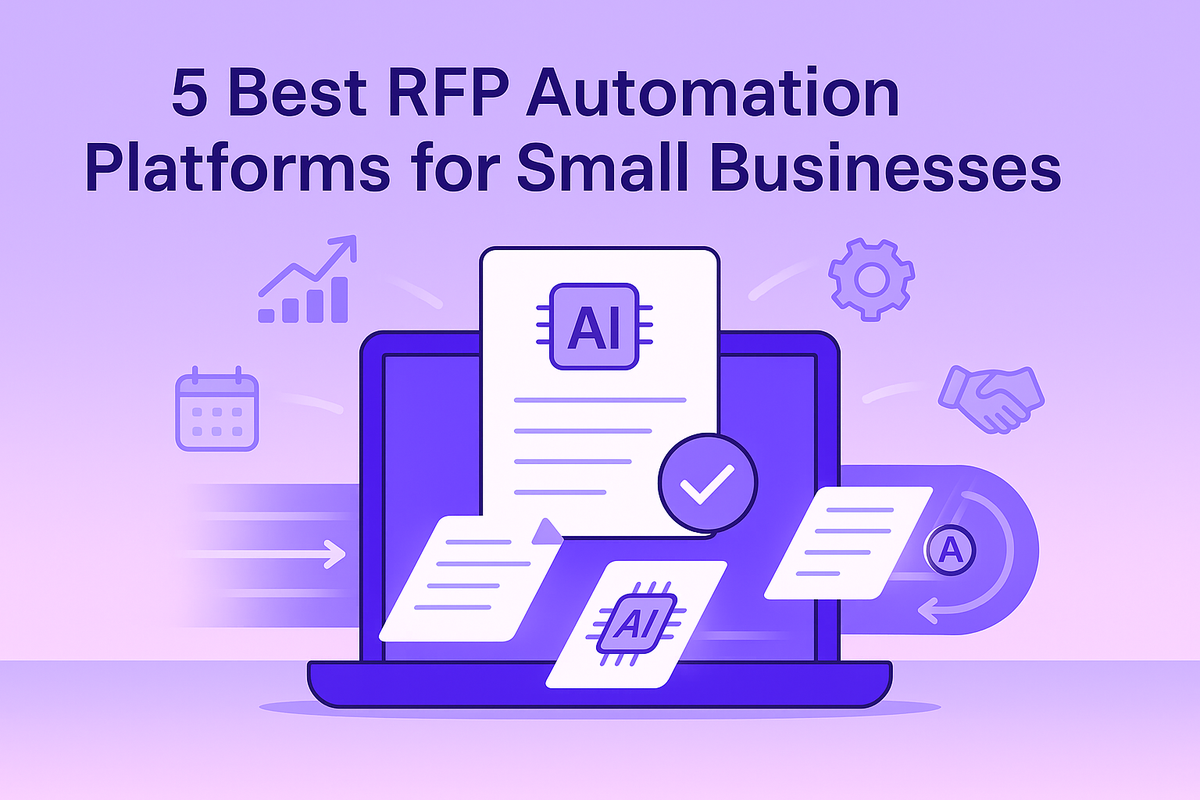What Most RFP Response Workflows Get Wrong
June 16, 2025
By
Evie Secilmis

Why Great RFPs Still Lose Deals (and How to Fix It)
If you’ve ever submitted a polished, on-time RFP response… and still lost the deal, this might be why.
Most teams think the hardest part of the RFP process is answering the questions. But the truth is, getting the answers in isn’t the same as winning the deal.
Your proposal doesn’t just land with your champion—it travels. Legal reads it for risk. Procurement dissects it for cost. IT scans it for compliance. Each one forms an opinion, often without you in the room to explain.
If your RFP response doesn’t account for that internal journey, it’s already at a disadvantage.
Mistake #1: Focusing on Completion Over Clarity
Many teams treat RFPs like checklists: answer every question, double-check compliance, hit submit. Done.
But your buyer still has to sell it internally.
That means:
- Legal needs to understand your risk posture
- IT needs to trust your security claims
- Finance needs to see value and ROI
- Decision-makers need a clear business case
If your RFP response is only designed to be submitted—not to be used—you’re making your champion do too much work.
Mistake #2: Writing for Reviewers, Not Advocates
Template-style answers check the boxes but rarely persuade. Great RFPs balance technical precision with narrative clarity.
They’re:
- Structured for readability
- Tailored to different stakeholder types
- Framed in outcomes, not just features
Modern AI RFP platforms like Iris make this possible—automatically adapting tone, structure, and detail based on audience so your proposal becomes an internal selling tool, not just a technical artifact.
The RFP as a Second Sales Meeting
Your RFP isn’t a form—it’s your silent sales meeting. It’s the version of your pitch that gets passed around after you’ve left the room.
When written strategically, an RFP can:
- Reinforce your differentiators long after the call ends
- Build confidence across departments
- Create alignment between your champion and decision-makers
The best RFPs don’t just answer questions—they teach buyers how to advocate for you internally. Iris helps teams structure proposals around that intent: embedding clarity, compliance, and persuasion into every line.
What Happens After You Win
Winning an RFP isn’t the end—it’s the first promise your customer holds you to.
Procurement, customer success, and legal all reuse your responses to define SLAs, renewals, and support expectations. If those answers were rushed or inconsistent, friction starts on day one.
Iris ensures continuity between what’s promised pre-sale and what’s delivered post-sale.
Through audit trails, version control, and compliance-backed answers, teams maintain transparency and trust—long after the ink dries.
The New Currency: Internal Influence
The next frontier of RFP success isn’t speed—it’s influence.
When a proposal moves easily inside a buyer’s organization—forwarded, cited, trusted—that’s real traction. It means your message is doing work on your behalf.
Iris tracks that kind of influence by:
- Structuring answers for multi-stakeholder readability
- Maintaining consistency across legal, technical, and value narratives
- Capturing engagement insights to show what resonates internally
Win rate tells you what closed. Influence rate tells you what compelled.
Final Thought: Clarity Wins Behind Closed Doors
A proposal doesn’t succeed when it’s submitted—it succeeds when it’s understood.
Teams that design for internal adoption, clarity, and confidence don’t just win more—they build faster trust.
That’s the difference between automation and advantage.
👉 See how Iris turns RFPs into a second sales meeting → heyiris.ai
Frequently Asked Questions
Q1: How is an AI RFP platform different from traditional proposal software?
Traditional RFP tools focus on storing and retrieving answers. An AI-first platform like Iris understands the context behind every question—adapting tone, structure, and proof points for different audiences automatically. It’s built to help teams influence decisions, not just complete submissions.
Q2: Why do RFPs stall during procurement reviews?
Procurement teams evaluate risk, compliance, and pricing alignment—often without direct communication with sales. When proposals lack clear, forwardable context, they stall internally. Iris helps teams anticipate these friction points by embedding compliant, audit-ready language and multi-stakeholder clarity into every response.
Q3: What’s the ROI of improving the RFP process?
High-performing organizations that streamline RFP management see measurable impact: faster cycle times, higher win rates, and better renewal alignment. By automating repetitive work and improving internal clarity, Iris customers typically cut response time by over 50% while increasing influence with decision-makers.
Share this post
Link copied!



















